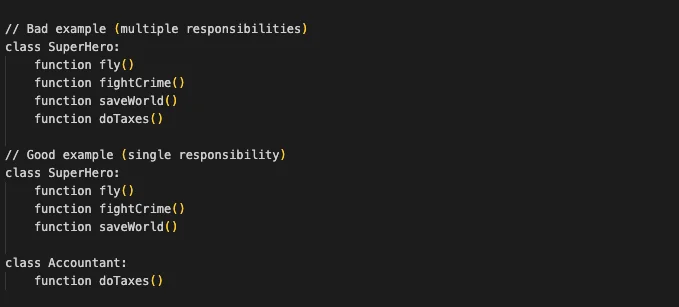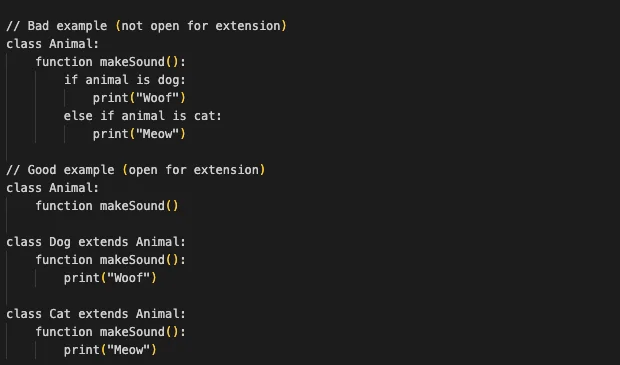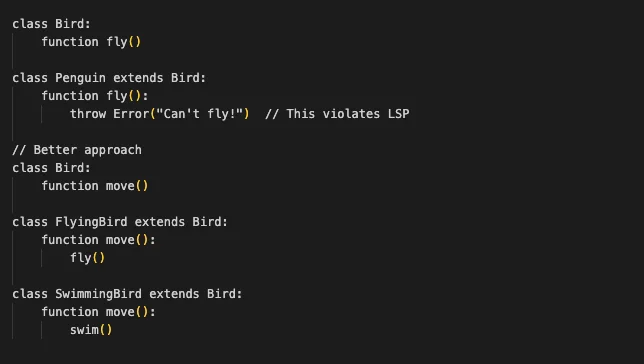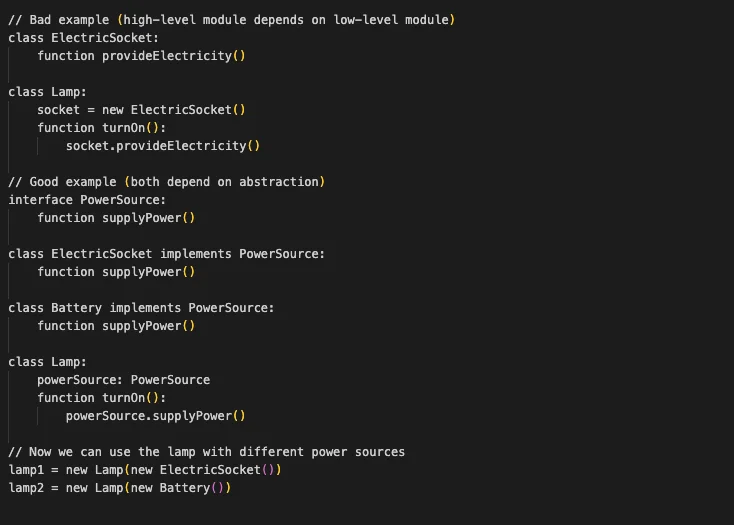SOLID Principles: Guide to Better Software

Projects which you are building or maintaining can be managed easier while using these guidelines. To achieve that goal first we need to get a better idea about what are SOLID principles and what are the use cases of that. These sets of principles can significantly improve your coding skills as well.
S - Single Responsibility Principle
Imagine you have a toy box. Now, what if we put all your toys, your clothes, and your snacks in that same box? It would be a big mess, right? That's why we have different places for different things.
In software, we do the same thing. We make sure each part of our program does just one job and does it really well.
Real-world example: Think of a restaurant. The chef cooks the food, the waiter serves it, and the cashier handles the money. Each person has one main job, making everything run smoothly.
Pseudo code example:

O - Open-Closed Principle
Have you ever played with building blocks? You can add new blocks to make your creation bigger and better without breaking what you've already built.
In software, we want to be able to add new things without messing up what's already working.
Real-world example: Think of a vending machine. You can add new snacks or drinks without having to rebuild the whole machine. It's open for new items but closed for changes to how it works.
Pseudo code example:

L - Liskov Substitution Principle
This one's a bit tricky, but imagine you have a pet cat. Now, if someone gave you a toy cat that meows and moves around, you could play with it just like your real cat, right?
In software, we want to make sure that if we replace one part of our program with a similar part, everything still works as expected.
Real-world example: Think of a car. Whether it runs on gas or electricity, you can still drive it the same way. The engine type can be substituted without changing how you use the car.
Pseudo code example:

I - Interface Segregation Principle
Imagine if your toy phone could also brush your teeth and tie your shoes. That would be weird and complicated, wouldn't it?
In software, we don't want to make things do too many different jobs. We keep things simple and focused.
Real-world example: Think of a remote control. It has just the buttons you need, not every button for every device in your house. Each remote is simple and does its specific job well.
Pseudo code example:

D - Dependency Inversion Principle
Imagine you have a toy car that only works with one specific type of battery. If that battery runs out, you can't play with your car anymore! Wouldn't it be better if your toy car could use any kind of battery that fits?
In software, we want our programs to be flexible, just like a toy that can use different types of batteries. We do this by making sure the important parts of our program don't depend on the small details, but instead on general ideas.
Real-world example: Think of a universal remote control. It doesn't need to know exactly how each TV or DVD player works. Instead, it sends general commands like "turn on" or "volume up," and each device knows how to respond to these commands in its own way.
Pseudo code example:

In this example, our lamp doesn't care if it's plugged into a wall socket or using a battery. It just knows it needs a power source. This makes our lamp more flexible and easier to use in different situations.